Did you know that Tongariro is not only New Zealand’s oldest national park but also the world’s fourth oldest national park and the first place to receive UNESCO’s dual World Heritage status for both its cultural significance and natural beauty? This volcanic wonderland in the heart of New Zealand’s North Island has been captivating adventurers since 1887, offering some of the most dramatic landscapes you’ll find anywhere on Earth.
Getting There & Planning Your Journey
Tongariro National Park is located in the central North Island of New Zealand, approximately 330 km (205 mi) south of Auckland and 320 km (199 mi) north of Wellington. The park is easily accessible by car, with State Highway 1 (the Desert Road) running along its eastern boundary and State Highway 4 along its western edge.
By Air
The closest airports are in Taupo (about 1.5 hours drive) and Palmerston North (about 2 hours drive). From there, you’ll need to rent a car or take a shuttle to reach the park.
Find the Best Flight Deals
Compare prices from major airlines and book your flight to New Zealand.
By Car
Having your own vehicle gives you the most flexibility to explore the park. The drive from Auckland takes approximately 4 hours, while from Wellington it’s about 4.5 hours. The journey itself is scenic, especially along the Desert Road with its views of the volcanic peaks.
Rent a Car for Your Adventure
Secure a rental car to explore Tongariro National Park at your own pace.
By Bus
Several bus companies operate services to National Park Village and Ohakune, the main gateway towns to Tongariro. InterCity runs daily services from Auckland and Wellington, while specialized shuttle services operate between these towns and popular trailheads within the park.
Best Time to Visit Tongariro National Park
Tongariro National Park experiences distinct seasons, each offering a unique experience for visitors. Your ideal visiting time depends on the activities you’re planning and your comfort with various weather conditions.
Summer (December-February)
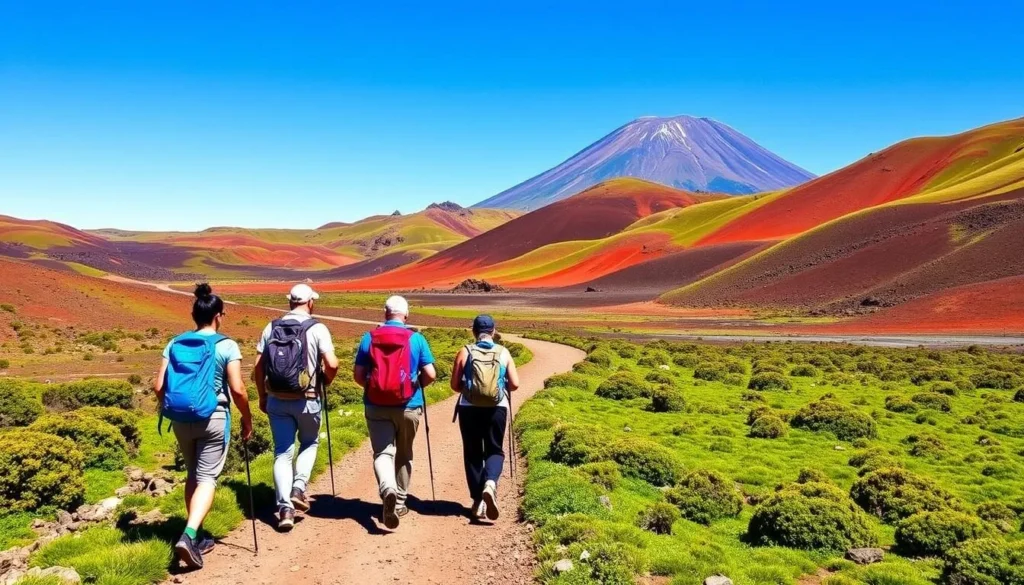
Weather: 15-25°C (59-77°F)
The most popular time to visit, offering the most stable weather conditions and the best opportunity to complete the Tongariro Alpine Crossing. All trails are typically open, and the longer daylight hours give you more time to explore.
Pros: Warm temperatures, less chance of trail closures due to weather, longer daylight hours
Cons: More crowded, especially on popular trails, accommodation books up quickly
Autumn (March-May)

Weather: 10-20°C (50-68°F)
A wonderful time to visit with fewer crowds, beautiful autumn colors, and generally stable weather, especially in March and early April. Temperatures start to drop by May, and snow may begin to appear on the higher peaks.
Pros: Fewer visitors, beautiful photography opportunities, comfortable hiking temperatures
Cons: Weather becomes less predictable later in the season, shorter daylight hours
Winter (June-August)

Weather: 0-10°C (32-50°F)
Winter transforms Tongariro into a snow-covered wonderland. Mt Ruapehu becomes a popular skiing destination with two major ski fields: Whakapapa and Turoa. The Tongariro Alpine Crossing is still possible but should only be attempted with a guide and proper alpine equipment.
Pros: Skiing and snowboarding opportunities, magical snow-covered landscapes, fewer hikers
Cons: Cold temperatures, many trails require specialized equipment and experience, some areas may be closed
Spring (September-November)
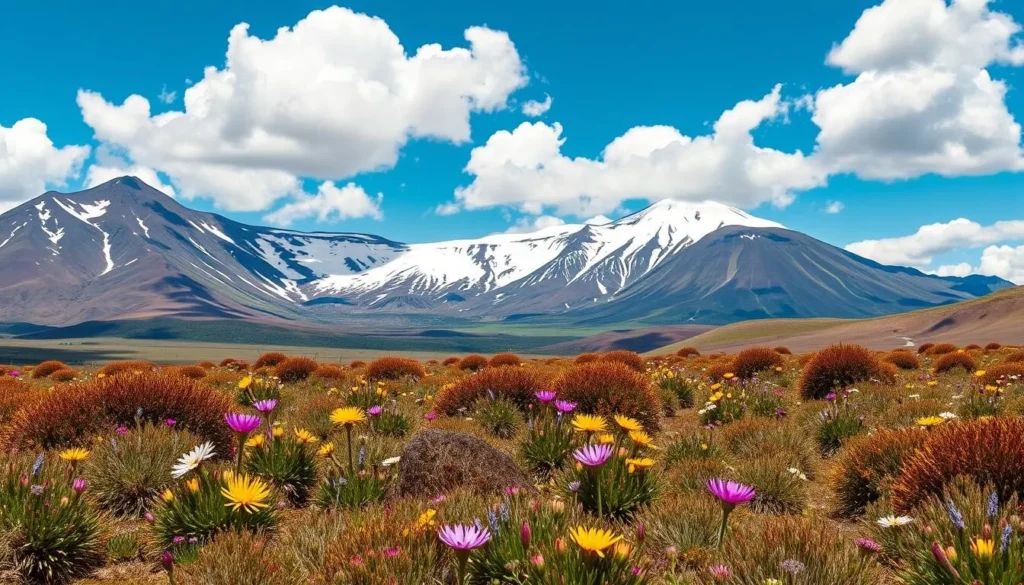
Weather: 5-15°C (41-59°F)
Spring brings wildflowers and the gradual melting of snow. Early spring still sees snow on the mountains, while late spring offers increasingly stable weather. This shoulder season provides a good balance between winter and summer conditions.
Pros: Blooming wildflowers, fewer visitors than summer, increasing daylight hours
Cons: Weather can be unpredictable, some higher trails may still have snow and ice
Weather Check Tip
Always check the latest weather forecast before heading out, regardless of the season. Mountain weather can change rapidly, and conditions at higher elevations can be significantly different from those in the valleys. The Department of Conservation visitor centers provide up-to-date information on trail conditions and weather forecasts.
Getting Around Locally
Once you’ve arrived at Tongariro National Park, you’ll need to consider how to get around to various attractions and trailheads.
Shuttle Services
For hikers planning to tackle the Tongariro Alpine Crossing, shuttle services are essential as this is a one-way track. Multiple companies operate daily shuttles from National Park Village, Whakapapa Village, and Ohakune to the start of the track and pick-ups from the finish point.
During peak season (October-April), these shuttles run frequently throughout the day. Booking in advance is highly recommended, especially during summer months.
Book Your Hiking Shuttle
Secure your transport to and from the Tongariro Alpine Crossing or other trails.
Self-Drive
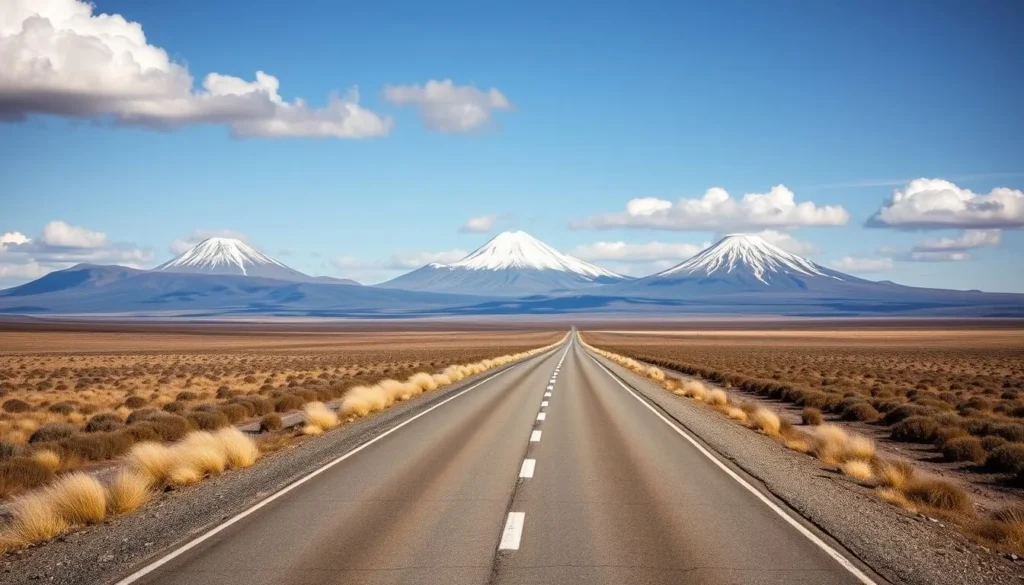
Having your own vehicle gives you the flexibility to explore the park at your own pace. The main roads within and around the park are well-maintained and accessible by standard vehicles. During winter, snow and ice can affect road conditions, so check updates and consider snow chains if traveling between June and September.
Note that for the Tongariro Alpine Crossing, parking at either end is strictly limited. Most visitors use shuttle services even if they have their own vehicle.
Guided Tours
For those who prefer a more structured experience or want to learn about the park’s geology, ecology, and cultural significance, guided tours are available. These range from half-day excursions to multi-day adventures and can be an excellent way to discover areas you might not find on your own.
Discover Guided Experiences
Enhance your visit with expert guides who know Tongariro National Park intimately.
Where to Stay
Tongariro National Park offers a range of accommodation options to suit different budgets and preferences. Most visitors stay in one of the gateway towns surrounding the park.
National Park Village
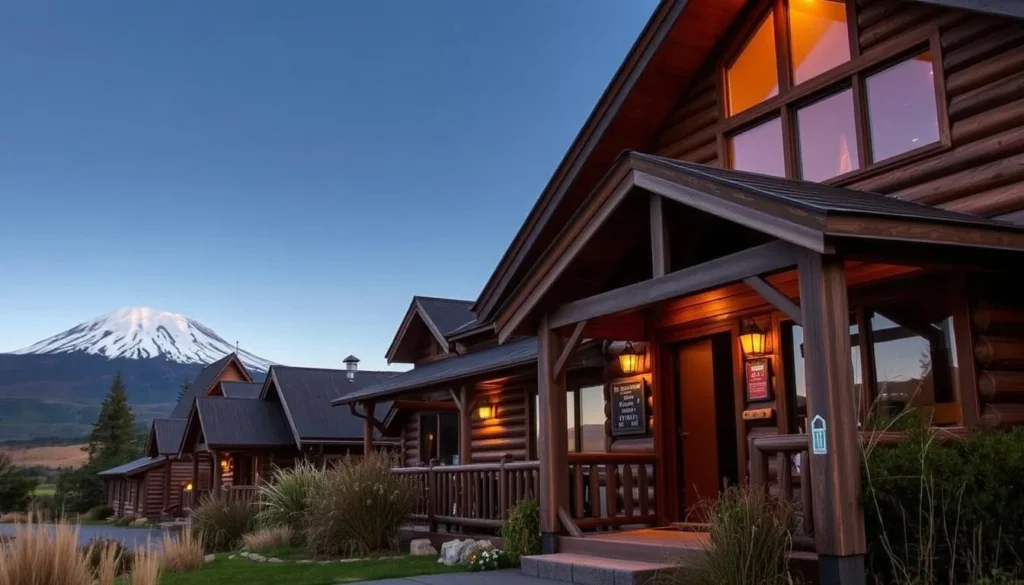
This small settlement is ideally located for accessing both the Tongariro Alpine Crossing and the Whakapapa ski field. It offers a range of accommodations from backpacker hostels to comfortable lodges.
Best for: Hikers planning to do the Tongariro Alpine Crossing, as many shuttle services operate from here.
Whakapapa Village
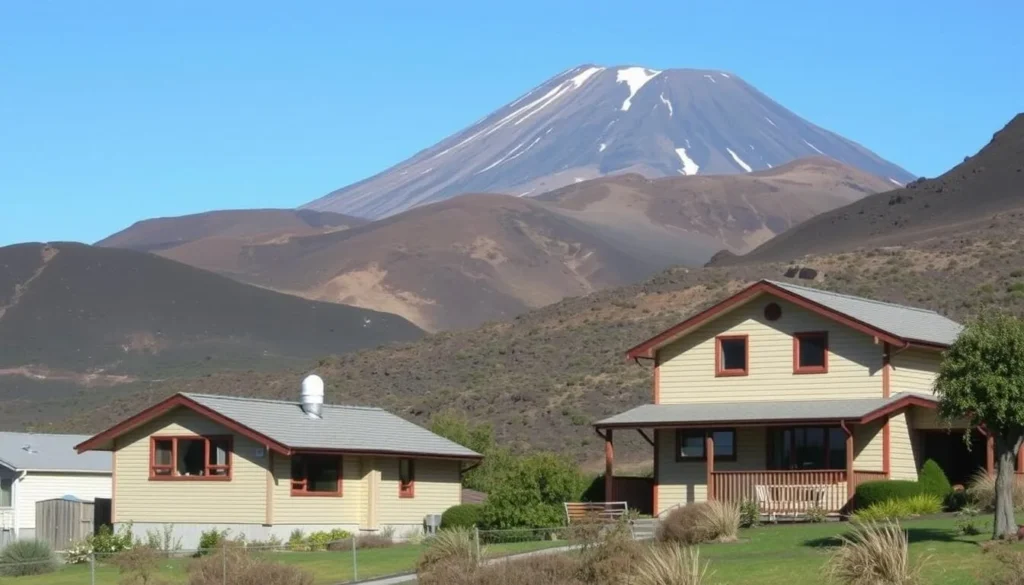
Located within the park boundaries, Whakapapa Village offers the most convenient access to short walks and the Whakapapa ski field. The historic Chateau Tongariro Hotel was once the centerpiece, though note it is currently closed for renovations.
Best for: Families and those wanting to be right in the heart of the park with easy access to shorter walks.
Ohakune
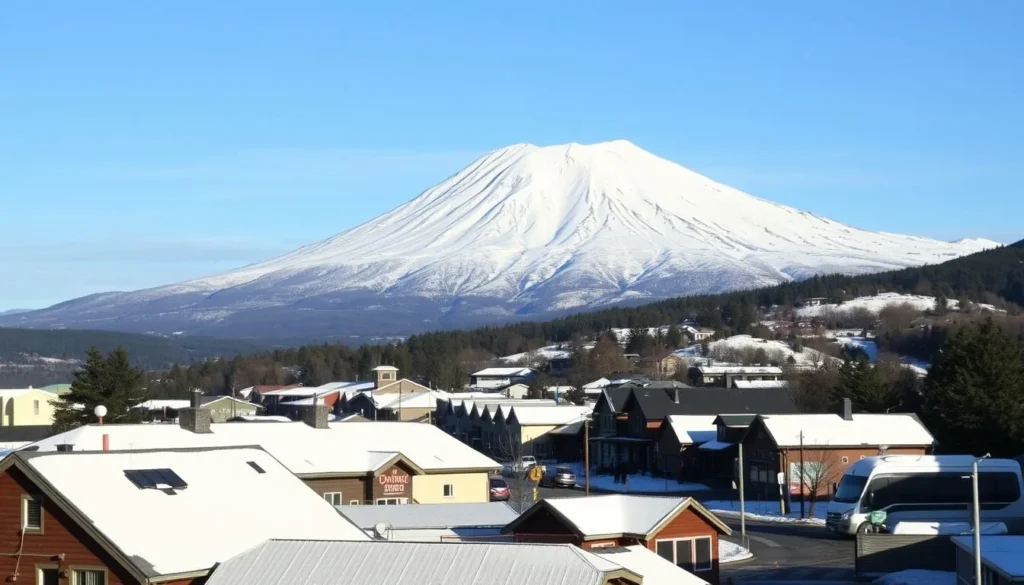
Known as the ‘Carrot Capital’ of New Zealand, Ohakune is a larger town on the southern edge of the park. It’s the main access point for the Turoa ski field and offers a wider range of accommodations, restaurants, and services.
Best for: Skiers heading to Turoa, those wanting more dining options, and visitors approaching from Wellington.
Turangi
Located about 40 minutes’ drive from the eastern side of the park, Turangi is known as the trout fishing capital of New Zealand. It offers a good range of accommodations and is a convenient base if you’re also planning to explore Lake Taupo.
Best for: Anglers, those on a tighter budget, and visitors wanting to combine Tongariro with Lake Taupo activities.
Department of Conservation Huts
For those hiking the Tongariro Northern Circuit Great Walk or other multi-day treks, DOC maintains several huts within the park. These provide basic accommodation with bunks, mattresses, and water supply. Booking is essential during the Great Walk season (October-April).
Best for: Serious hikers planning multi-day treks who want an immersive wilderness experience.
Find Your Perfect Stay in Tongariro
Compare prices and availability across all accommodation types in and around Tongariro National Park.
Top Things to Do in Tongariro National Park
Tongariro National Park offers a diverse range of activities for visitors of all interests and fitness levels. From world-renowned hikes to cultural experiences, here are the must-do activities in the park.
1. Tongariro Alpine Crossing
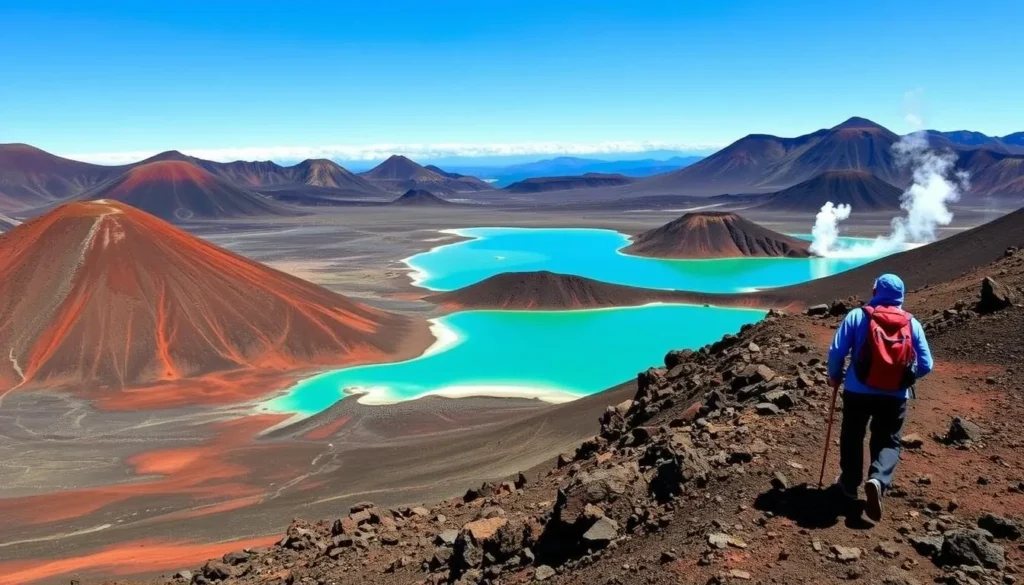
The jewel in the crown of Tongariro National Park is undoubtedly the Tongariro Alpine Crossing, frequently rated as one of the world’s best day hikes. This 19.4 km (12 mi) journey takes you through a remarkable volcanic landscape featuring steaming vents, old lava flows, the vivid Emerald Lakes, and stunning views of Mount Ngauruhoe (which served as Mount Doom in the Lord of the Rings films).
The hike typically takes 6-8 hours to complete and requires a moderate level of fitness. During summer (November-April), no special equipment is needed beyond proper hiking boots, weather-appropriate clothing, and plenty of food and water. In winter (May-October), the crossing becomes a true alpine expedition requiring crampons, ice axes, and preferably a guide.
Important Safety Information
The Tongariro Alpine Crossing traverses an active volcanic area with rapidly changing weather conditions. Always check the forecast before setting out, carry appropriate clothing for all weather conditions, and be prepared to turn back if conditions deteriorate. In winter or poor weather, consider hiring a guide.
2. Skiing and Snowboarding
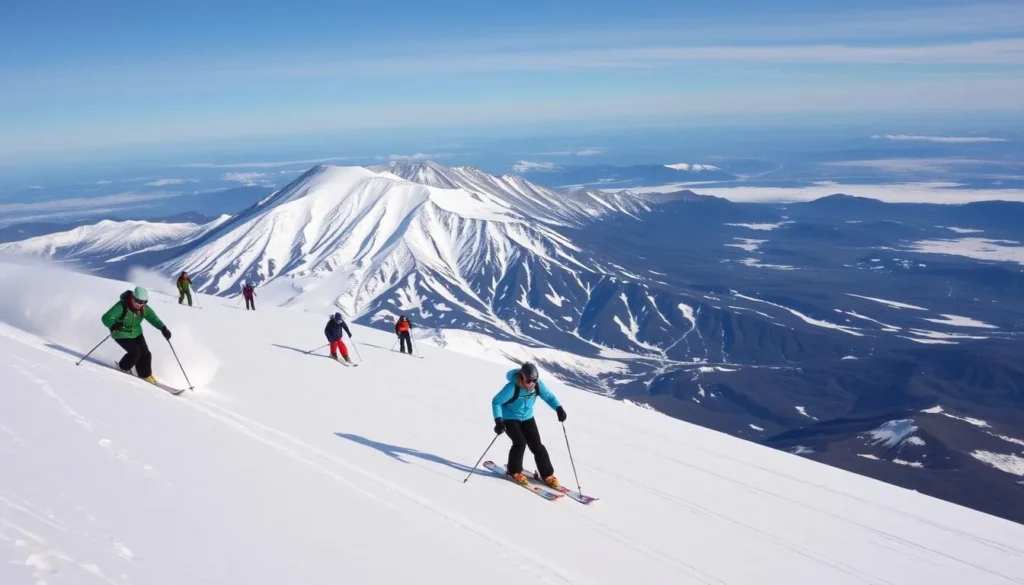
Mount Ruapehu hosts two major ski fields: Whakapapa on the northern slopes and Turoa on the southern side. Together, they form New Zealand’s largest ski area with over 1,050 hectares of skiable terrain.
The ski season typically runs from late June to late October, with both fields offering options for beginners through to advanced skiers and snowboarders. Equipment rental and lessons are available on-site.
3. Short Walks and Day Hikes
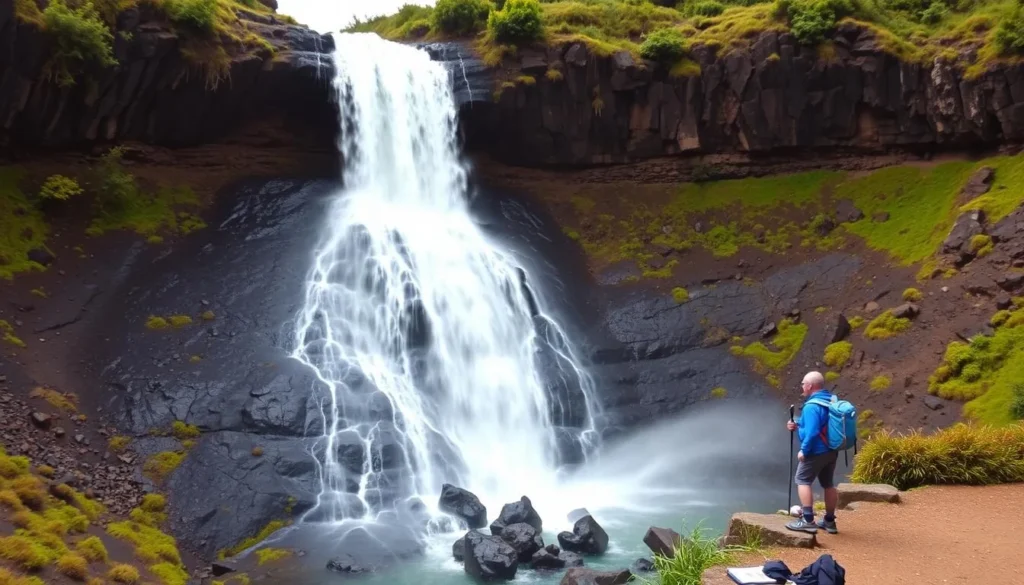
If the full Alpine Crossing seems too challenging, Tongariro offers numerous shorter walks that still showcase the park’s beauty:
- Taranaki Falls Track (2 hours return) – A popular loop track to a stunning 20-meter waterfall
- Tama Lakes Track (5-6 hours return) – An extension of the Taranaki Falls track to two crater lakes
- Ridge Track (30-40 minutes return) – Offers panoramic views of the mountains
- Tawhai Falls (20 minutes return) – A short walk to a picturesque waterfall featured in The Lord of the Rings
4. Tongariro Northern Circuit
One of New Zealand’s Great Walks, the Tongariro Northern Circuit is a 3-4 day trek that circumnavigates Mount Ngauruhoe. The 43 km (27 mi) loop includes the Alpine Crossing as one section and takes you through a diverse range of volcanic landscapes.
The track is well-marked and serviced by three Department of Conservation huts: Mangatepopo, Oturere, and Waihohonu. Booking these huts in advance is essential during the Great Walk season (October-April).
5. Mountain Biking
The park and surrounding areas offer excellent mountain biking opportunities. The Old Coach Road is a popular 15 km (9.3 mi) grade 2 (easy) trail that follows a historic coach road between Ohakune and Horopito, featuring native forest and historic viaducts.
For more challenging rides, the 42 Traverse and Fishers Track provide longer adventures through the forests on the park’s periphery.
6. Cultural Experiences
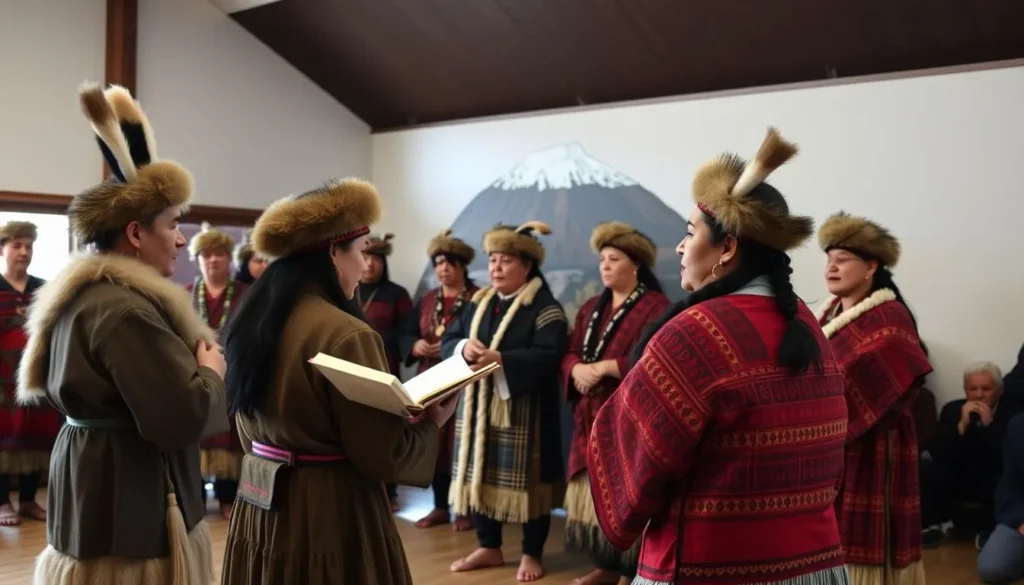
Tongariro holds deep cultural significance for local Māori, particularly the Ngāti Tūwharetoa iwi (tribe). The mountains are considered ancestors and were gifted to the nation by Chief Te Heuheu Tūkino IV in 1887, forming New Zealand’s first national park.
Visitors can learn about this cultural heritage through guided tours with Māori guides, visits to the Whakapapa Visitor Centre, and cultural performances in nearby towns.
Dining & Local Cuisine
After a day of adventure in Tongariro National Park, you’ll have worked up an appetite. The gateway towns offer a variety of dining options to refuel and relax.
National Park Village
This small village has a surprising number of quality dining options:
- The Station Cafe & Restaurant – A popular spot serving hearty meals in a historic railway building
- Schnapps Bar – Great for après-ski with pub-style food and local beers
- Spiral Cafe – Perfect for breakfast and lunch with good coffee and baked goods
Ohakune
With a larger selection of restaurants, Ohakune is considered the culinary hub of the region:
- The Cyprus Tree – Upscale dining featuring local ingredients
- Osteria – Italian cuisine with wood-fired pizzas
- Powderkeg – Popular restaurant and bar with a great atmosphere
- Utopia Cafe – Excellent for breakfast and lunch with vegetarian options
Turangi & Whakapapa
Other dining options around the park include:
- Creel Cafe (Turangi) – Casual dining with great coffee
- Plateau Restaurant (Whakapapa) – Located in Whakapapa Village with mountain views
- Tussock Bar & Restaurant (Turangi) – Relaxed atmosphere with a good selection of local beers
Local Specialties

While visiting the Tongariro region, be sure to try these local specialties:
- Hangi – Traditional Māori cooking method where food is steamed in an earth oven
- New Zealand Lamb – The region is known for its quality lamb dishes
- Rainbow Trout – Freshly caught from nearby Lake Taupo and local rivers
- Kumara – Sweet potato, a staple in Māori cuisine
- Manuka Honey – Produced locally and used in various dishes and desserts
- Craft Beer – Several local breweries produce excellent beers worth sampling
Dining Tip
During peak season (December-February and July-August), it’s advisable to make dinner reservations in advance, especially for larger groups. Many hikers finish the Tongariro Alpine Crossing around the same time, creating a dinner rush at popular establishments.
Safety, Etiquette & Practical Tips
Safety Considerations
- Weather Preparedness – Mountain weather can change rapidly. Always check forecasts before heading out and be prepared for sudden changes.
- Proper Equipment – Wear appropriate footwear and clothing, carry sufficient water, food, and emergency supplies.
- Volcanic Activity – Tongariro is an active volcanic area. Check volcanic alert levels before visiting and follow all safety instructions.
- Track Conditions – Inform yourself about current track conditions at visitor centers or the Department of Conservation website.
- Communication – Cell phone coverage is limited in many parts of the park. Consider carrying a personal locator beacon for remote hikes.
Cultural Etiquette
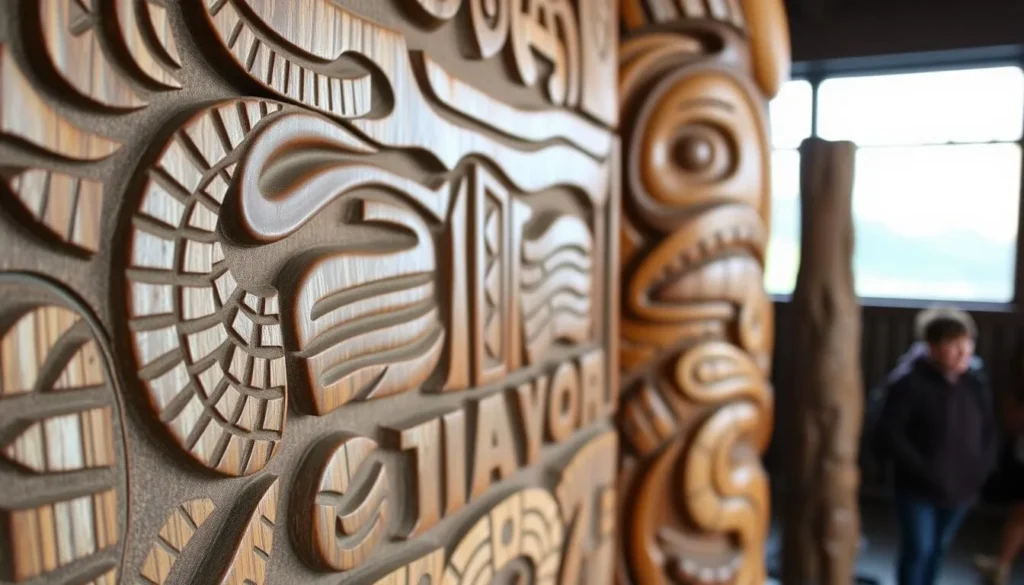
- Respect Sacred Sites – The mountains of Tongariro are sacred to local Māori. Show respect by not climbing directly on sacred peaks unless on designated tracks.
- Leave No Trace – Pack out all rubbish and stay on marked trails to minimize environmental impact.
- Photography – Ask permission before photographing Māori cultural performances or sacred sites.
- Water Sources – Treat all natural water sources before drinking, even if they appear clean.
Practical Travel Tips
What to Pack
- Layered clothing (even in summer)
- Waterproof jacket and pants
- Sturdy hiking boots
- Sun protection (hat, sunscreen, sunglasses)
- First aid kit
- Water bottle and water purification method
- Map and compass/GPS device
- Power bank for electronic devices
Services
- ATMs – Available in National Park Village, Ohakune, and Turangi
- Groceries – Small stores in gateway towns, larger supermarkets in Turangi
- Fuel – Gas stations in National Park Village, Ohakune, and Turangi
- Medical – Medical centers in Turangi and Ohakune, with the nearest hospital in Taupo
- Wi-Fi – Available at most accommodations and some cafes
Visitor Centers
- Whakapapa Visitor Centre – Located in Whakapapa Village, provides information on tracks, weather, and volcanic activity
- Ohakune i-SITE – Tourist information center in Ohakune
- Turangi i-SITE – Tourist information center in Turangi
Ready for Your Tongariro Adventure?
Start planning your trip to one of New Zealand’s most spectacular landscapes.
Experience the Magic of Tongariro
Tongariro National Park offers a truly unique experience where volcanic wonders, Māori cultural heritage, and outdoor adventures converge. Whether you’re crossing between emerald lakes on New Zealand’s most famous day hike, carving fresh powder on an active volcano, or simply soaking in the otherworldly landscapes that inspired Middle-earth, Tongariro promises memories that will last a lifetime.
The park’s dual World Heritage status recognizes both its natural significance and cultural importance—a rare distinction that speaks to the special character of this remarkable place. By planning your visit thoughtfully and respecting both the natural environment and cultural values, you’ll experience the best that Tongariro has to offer.
So lace up your hiking boots, pack your sense of adventure, and prepare to be amazed by the volcanic heartland of New Zealand’s North Island. The mountains are calling—will you answer?
Begin Your Tongariro Journey Today
From flights to accommodations to guided experiences, we’ve got everything you need to plan your perfect Tongariro adventure.
The above is subject to change.
Check back often to TRAVEL.COM for the latest travel tips and deals.






